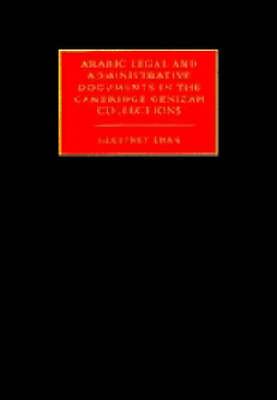Cambridge University Library Genizah
2 total works
The volume contains the edition and description of the fragments of medieval Karaite Hebrew Bible manuscripts in Arabic characters which have been preserved in the Cairo Genizah. It consists of an introduction, a description of the texts, a concluding synthesis, and plates. The manuscripts being examined in this volume are of great importance for our knowledge and understanding of the medieval Karaites in the Near East, and also for the history of the pronunciation of the Hebrew language. While demonstrating how the Karaite Jewish sectarians imitated Moslem scribal practice as a result of their rebellion against Rabbanite traditions and institutions, the texts reflect, too, the distribution of long and short vowels in the Tiberian reading tradition, and so make an important contribution to our picture of how the Hebrew language developed.
Arabic Legal and Administrative Documents in the Cambridge Genizah Collections
by Geoffrey Khan
Published 16 September 1993
This work is a description and edition of medieval Arabic legal and administrative documents written in Arabic script that are found in the Cambridge Genizah collections. The majority of these documents (desciptions of 159 are contained in the volume) were produced in Fustat (old Cairo) in the Fatimid period (10th-12th centuries AD), and most were written by Muslim notaries or officials, although a large number of them concern Jews. The documents constitute a unique source for the social and political history of medieval Egypt, especially with regard to the relations between Jews and Muslims. They also offer a penetrating insight into the practice of law in medieval Islam and the administrative structure of government offices. Nearly all the documents in the volume have not been studied before. They comprise important primary source material for a number of disciplines, including Middle Eastern history, Jewish history, Arabic philology, and Islamic law.

